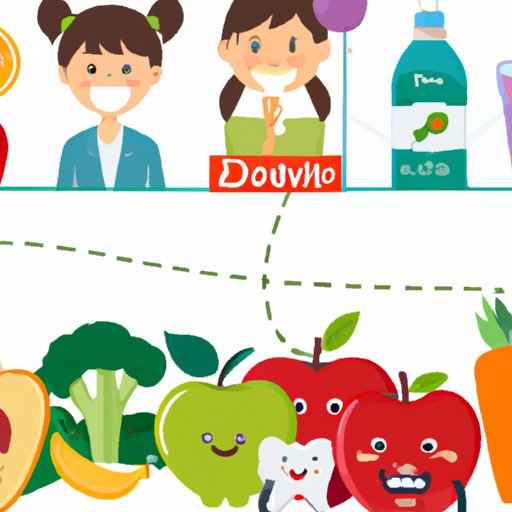Introduction
Cavities, also known as dental caries, are a type of dental disease caused by bacteria. They occur when the bacteria in plaque eat away at the enamel on the teeth, resulting in small holes or pits. Left untreated, cavities can cause serious damage to the teeth, leading to pain, infection, and even tooth loss. Fortunately, there are several steps you can take to care for cavities at home and reduce your risk of developing them.
Step 1: Brush and Floss Regularly
One of the best ways to care for cavities at home is to brush and floss your teeth regularly. Brushing helps remove plaque from the surface of the teeth and prevents cavities from forming. Flossing helps remove food particles and bacteria from between the teeth, where they can become lodged and cause decay. Brushing and flossing also help keep your breath fresh and promote overall oral health.
When brushing and flossing, it’s important to use the right technique. Brush your teeth gently with a soft-bristled toothbrush and fluoride toothpaste for two minutes, twice a day. Use a circular motion to reach all areas of the teeth and gums. Floss gently between each tooth and around the gum line, making sure to get underneath the gum line. It’s also important to replace your toothbrush every three months to ensure that it is in good condition.

Step 2: Use Fluoride Toothpaste
Fluoride toothpaste is another essential tool for caring for cavities at home. Fluoride helps strengthen the teeth and protect against decay. It can also help reverse early signs of decay and remineralize weakened enamel. When shopping for toothpaste, look for one that has been approved by the American Dental Association (ADA). This will ensure that it contains enough fluoride to be effective.
Step 3: Limit Sugary Drinks and Foods
Sugary drinks and foods can increase your risk of developing cavities. These include soda, juice, candy, and other sweet treats. The sugar in these foods and drinks feeds the bacteria in plaque, which can lead to the formation of cavities. To reduce your risk of cavities, limit your intake of sugary foods and drinks and opt for healthier alternatives instead.

Step 4: Eat Fruits and Vegetables
In addition to limiting sugary foods and drinks, it’s important to incorporate plenty of crunchy fruits and vegetables into your diet. These foods contain fiber, which helps scrub away plaque and food particles from the teeth. They also stimulate saliva production, which helps wash away bacteria and neutralize acids in the mouth. Examples of crunchy fruits and vegetables include apples, carrots, celery, and cucumbers.

Step 5: Visit Your Dentist Regularly
Finally, it’s important to visit your dentist regularly for checkups and cleanings. During these visits, your dentist will be able to identify any areas of decay and provide treatment to stop it from progressing. He or she will also be able to provide advice on how to care for cavities at home and suggest any changes you may need to make to your oral hygiene routine. Generally speaking, you should visit the dentist every six months for a checkup and cleaning.
Conclusion
Caring for cavities at home is an important part of maintaining good oral health. By following the steps outlined above, you can help prevent and treat cavities and keep your teeth healthy and strong. Remember to brush and floss regularly, use fluoride toothpaste, limit sugary foods and drinks, eat crunchy fruits and vegetables, and visit your dentist regularly for checkups and cleanings.
Taking these steps will help keep your smile looking its best and ensure that your teeth stay healthy for many years to come.
(Note: Is this article not meeting your expectations? Do you have knowledge or insights to share? Unlock new opportunities and expand your reach by joining our authors team. Click Registration to join us and share your expertise with our readers.)
